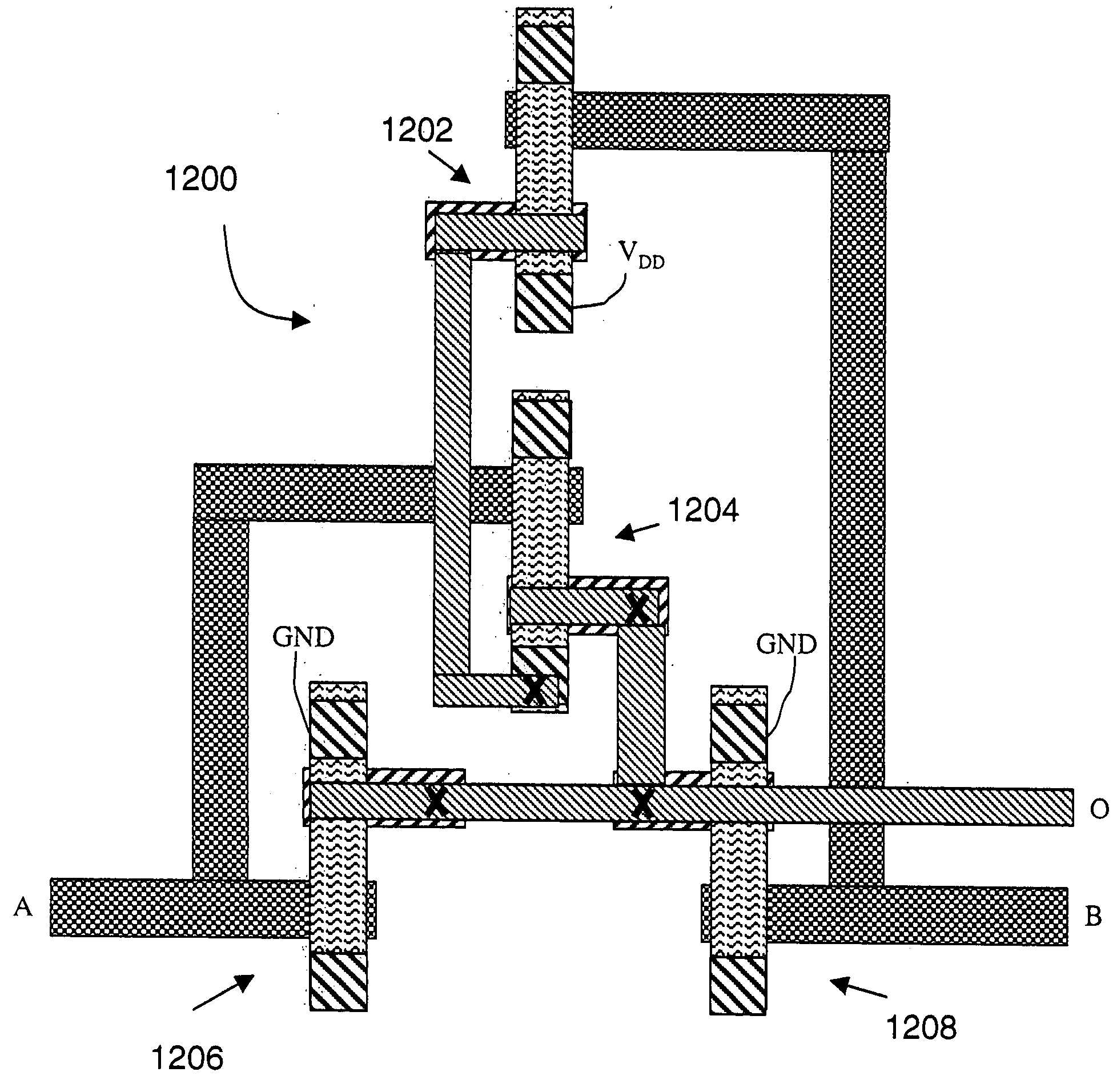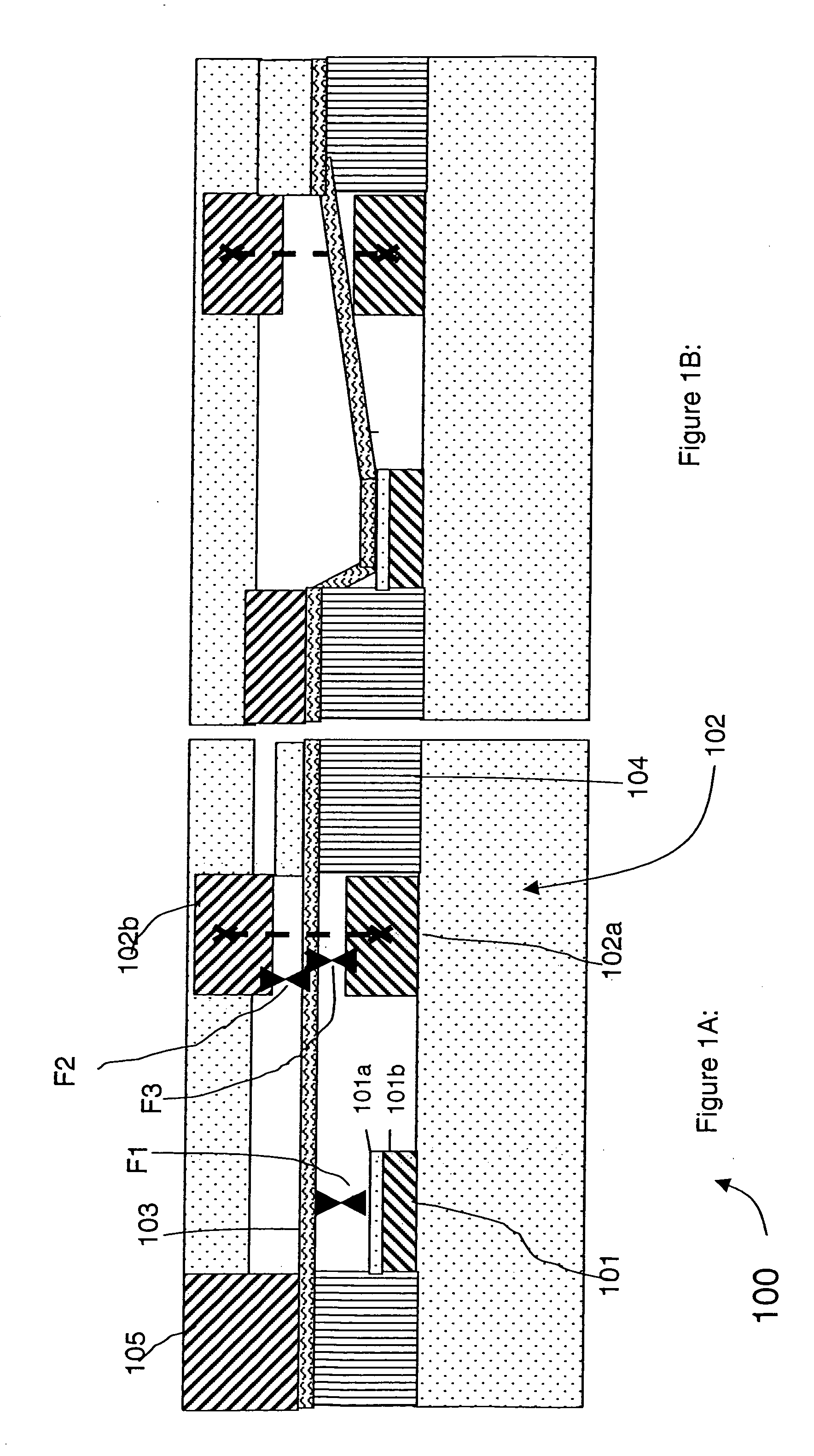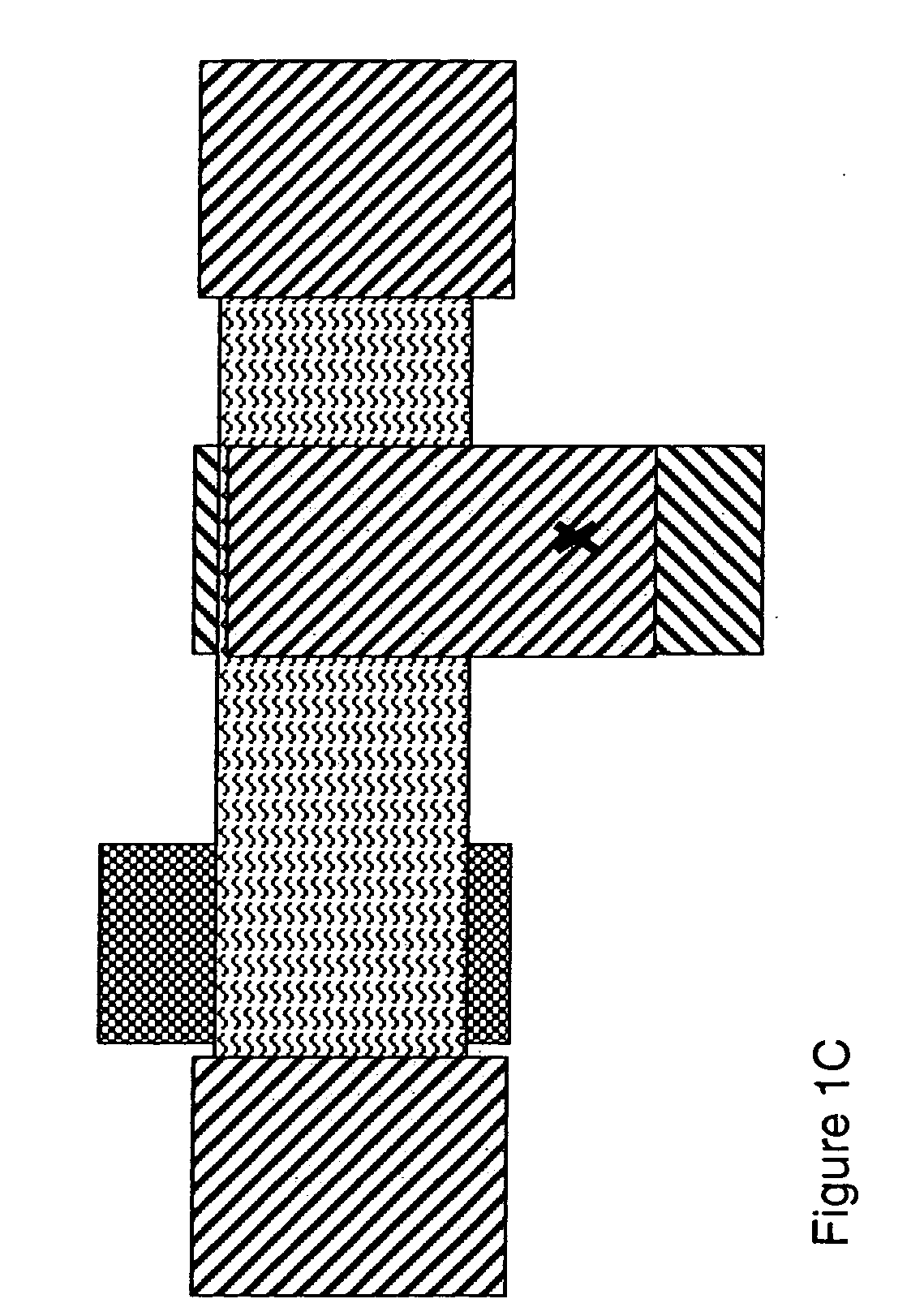Circuits made from nanotube-based switching elements with multiple controls
a switching element and nanotube technology, applied in the field of nanotube switching elements, can solve the problems of high power consumption, density and operation speed of mos digital circuits, and limited density of bipolar digital integrated circuits
- Summary
- Abstract
- Description
- Claims
- Application Information
AI Technical Summary
Benefits of technology
Problems solved by technology
Method used
Image
Examples
Embodiment Construction
[0036] Preferred embodiments of the invention provide switching elements in which a nanotube-based channel may be controllably formed and unformed, so that a signal may be transferred from a signal node to an output node. The switching element includes multiple control electrodes to control the formation and unformation of the channel, to provide a dual-rail capability, and to be used in novel ways. The transferred signal may be a varying signal or a reference signal, depending on the manner in which the switching element is utilized and arranged. Preferred embodiments provide an isolation structure so that such signal transfer and the switching element's operation is substantially invariant to the output state. For example, the output node may float and / or be tied to other electrical components and the circuit will operate in a predictable switch-like manner. Consequently, the switching elements may be formed into larger circuits, such as Boolean logic circuits. Under some embodime...
PUM
 Login to View More
Login to View More Abstract
Description
Claims
Application Information
 Login to View More
Login to View More - R&D
- Intellectual Property
- Life Sciences
- Materials
- Tech Scout
- Unparalleled Data Quality
- Higher Quality Content
- 60% Fewer Hallucinations
Browse by: Latest US Patents, China's latest patents, Technical Efficacy Thesaurus, Application Domain, Technology Topic, Popular Technical Reports.
© 2025 PatSnap. All rights reserved.Legal|Privacy policy|Modern Slavery Act Transparency Statement|Sitemap|About US| Contact US: help@patsnap.com



